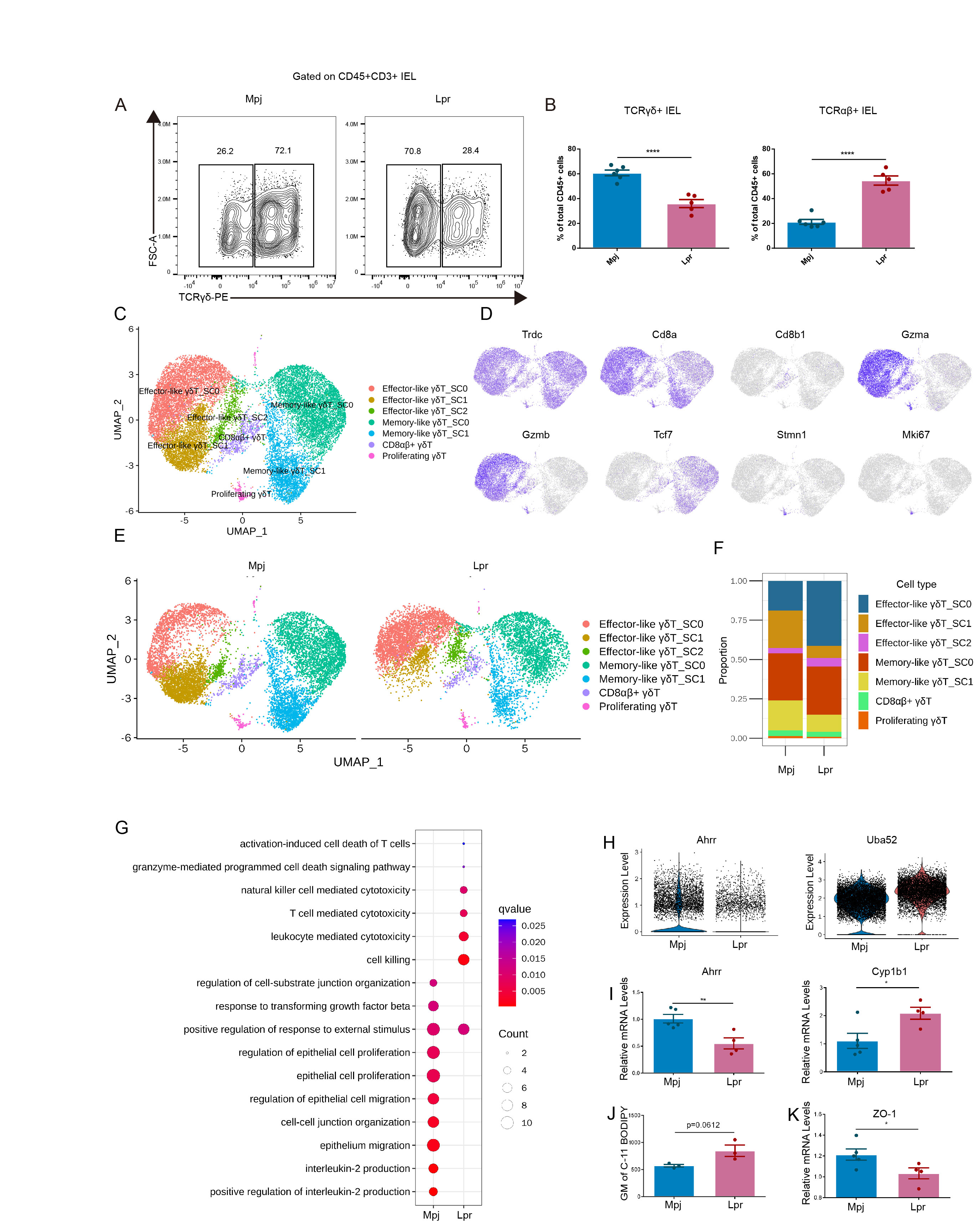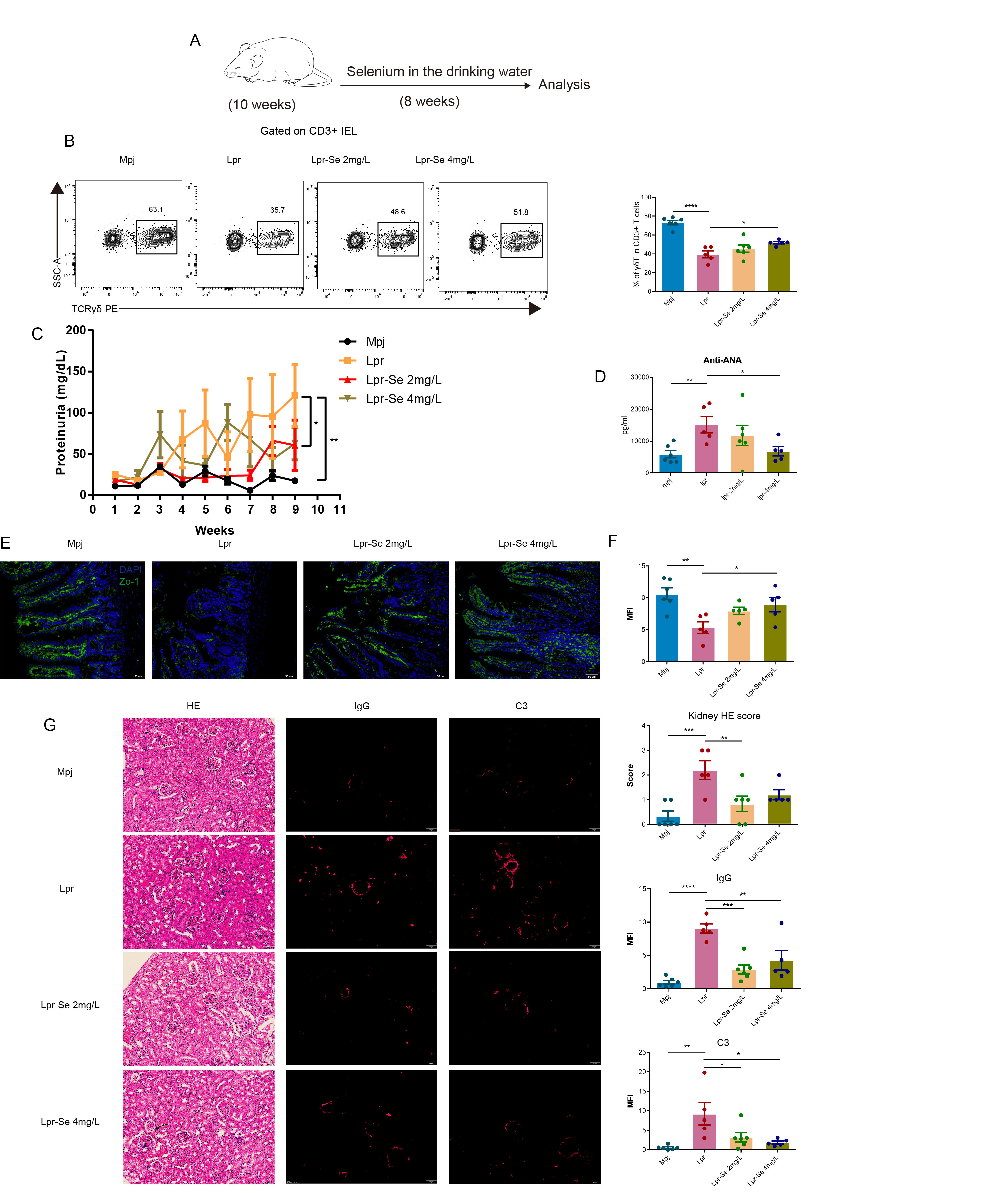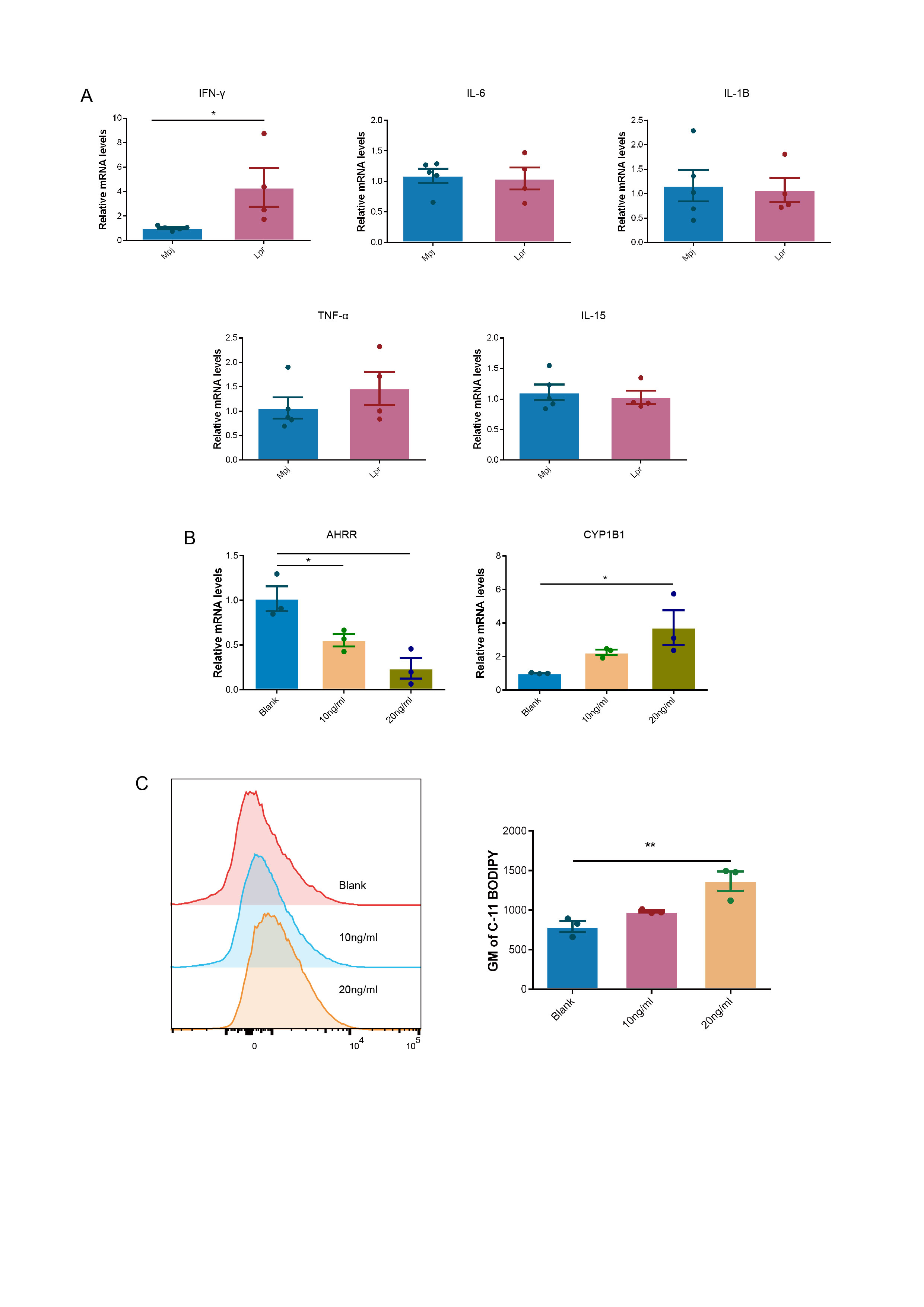Session Information
Session Type: Abstract Session
Session Time: 3:00PM-4:30PM
Background/Purpose: Dysregulation of intestinal γδT cells orchestrates the pathogenesis of various autoimmune disorders, however, its involvement in systemic lupus erythematosus (SLE) etiology remains elusive.
Methods: Employing single-cell sequencing, we delineated the landscape of intestinal γδT cells in SLE murine model, complemented by flow cytometry and in vivo and in vitro assays to corroborate the single-cell sequencing findings. Supplementation of selenium was administered to observe their impact on the oxidative stress of intestinal γδT cells, gut barrier and the development of SLE.
Results: Integration of single-cell sequencing with flow cytometry unveiled a significant reduction of intestinal γδT cells along with markedly decreased expression of tight junction proteins. Mechanistically, single-cell sequencing analysis revealed significantly decreased expression of aryl hydrocarbon receptor repressor (AHRR) in intestinal γδT cells, resulting in excessive activation of the aryl hydrocarbon receptor and subsequent oxidative stress and ferroptosis in intestinal γδT cells. Supplementation with selenium effectively suppressed oxidative stress-induced γδT loss, improved gut barrier, and significantly reduced levels of proteinuria and autoantibodies in SLE model, ultimately improving their survival.
Conclusion: Our investigation unveiled that excessive activation of the aryl hydrocarbon receptor (AHR) induces oxidative stress and ferroptosis, leading to γδT cell loss and subsequent gut barrier impairment in SLE model. The beneficial effects of antioxidant stress on improving gut barrier offer new insights for the treatment of SLE.
To cite this abstract in AMA style:
Wang Q, Wu Y, Lu Q, Zhao M. Repression of the Aryl-hydrocarbon Receptor Prevents Oxidative Stress and Ferroptosis of Intestinal γδT Cells and Alleviates Systemic Lupus Erythematosus [abstract]. Arthritis Rheumatol. 2024; 76 (suppl 9). https://acrabstracts.org/abstract/repression-of-the-aryl-hydrocarbon-receptor-prevents-oxidative-stress-and-ferroptosis-of-intestinal-%ce%b3%ce%b4t-cells-and-alleviates-systemic-lupus-erythematosus/. Accessed .« Back to ACR Convergence 2024
ACR Meeting Abstracts - https://acrabstracts.org/abstract/repression-of-the-aryl-hydrocarbon-receptor-prevents-oxidative-stress-and-ferroptosis-of-intestinal-%ce%b3%ce%b4t-cells-and-alleviates-systemic-lupus-erythematosus/



